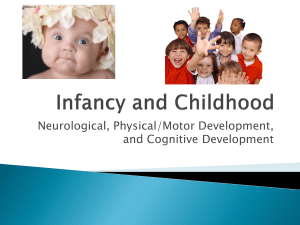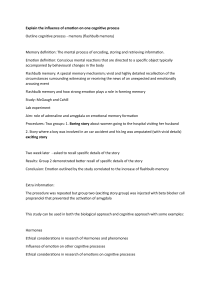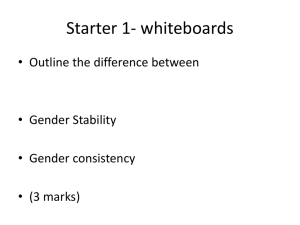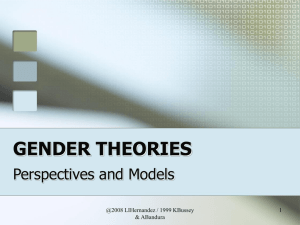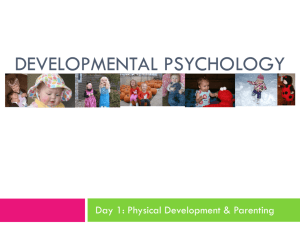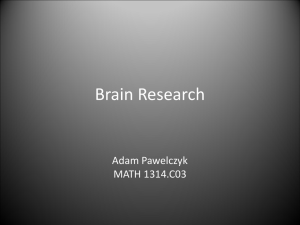Cognitive Level of Analysis
advertisement
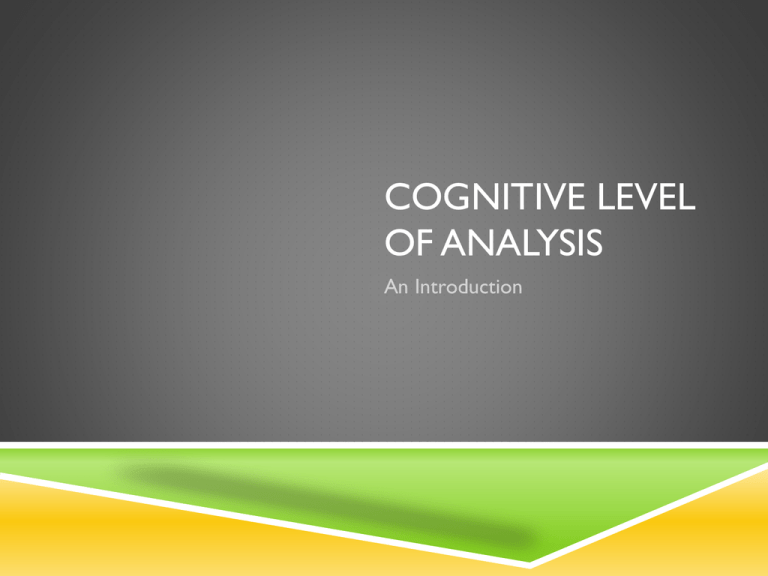
COGNITIVE LEVEL OF ANALYSIS An Introduction WHAT IS “COGNITION”? The mental act or process by which knowledge is acquired WHAT DO COGNITIVE PSYCHOLOGISTS DO? Focus on the way humans process information By looking at how we treat information (or stimuli) And how this treatment leads to responses MAIN AREAS OF COGNITIVE PSYCHOLOGY Perception Attention Memory Language THE PRINCIPLES OF COGNITIVE PSYCHOLOGY Mental representations and processes guide behavior Mental processes can be scientifically investigated Humans are not passive responders to the environment We are actively processing information RESEARCH METHODS FOR CLOA Experiments Observations Interviews/Verbal Protocols Case Studies DEFINITIONS Schemas Are: Schemas Are helpful Cognitive frameworks to help us organize and interpret information Abstract representations of events, objects, and relationships in the real world. Used to: Organize Knowledge Assist recall Create shortcuts for handling the large amounts of information in our environment BUT… Can lead to stereotypes and prejudice when information doesn’t conform to our ideas about the world Guide behavior Predict likely happenings Make sense of current experiences Bobo the doll experiment How did schema play a part? DEFINITIONS CON’T. Scripts Schemata or abstract cognitive representations of events and social interactions How to go to dinner What happens at birthday parties How to greet someone you don’t know When our scripts aren’t followed Frustration Anger Disappointment Confusion LISTEN WITH A SCHEMA IN MIND Listen to the story Jot down important details based on the schema you are given Now listen again Jot down important details based on the new schema What differences do you see? In this activity Schema may inhibit or assist in recall Affects how memories are encoded ***Replication of Anderson & Pichert (1978) ONE MORE ACTIVITY I need 4 volunteers As the story was retold: Leveling eliminate unnecessary information to simplify Sharpening add or exaggerate details Assimilation of data change it to fit stereotypes/pre-existing schema It is normal, for example, for students to switch the names of the flight attendant and pilot (assimilation), simplify the story to “he had a gun,” and to sharpen the story – that the passengers began beating and kicking him ****Replication of Bartlett (1932) The War of the Ghosts Story Want to do the story from the original experiment? CAN SCHEMA BE CONTROLLED? An example - listen carefully SCHEMA THEORY In the real world How we use our schemas To summarize: How do we know that schema exists when we can’t study them empirically? It is not entirely clear how they are acquired in the first place AND how they influence cognitive processes Caramazza (2009) Biological evidence Information re: living and non-living objects is shuttled to different parts of the brain - triggers appropriate reactions – even in blind people Assessment on Friday: Evaluate schema theory with reference to research studies Study Guide handout - reduce to an index card for support during assessment


